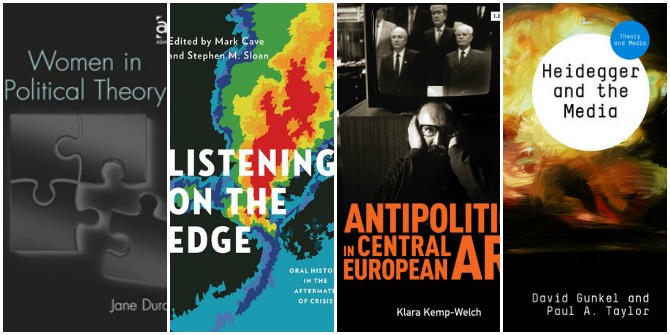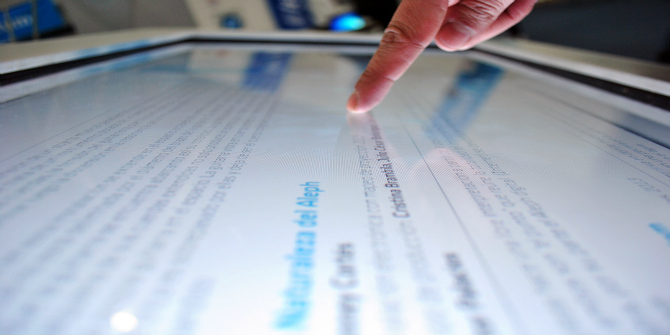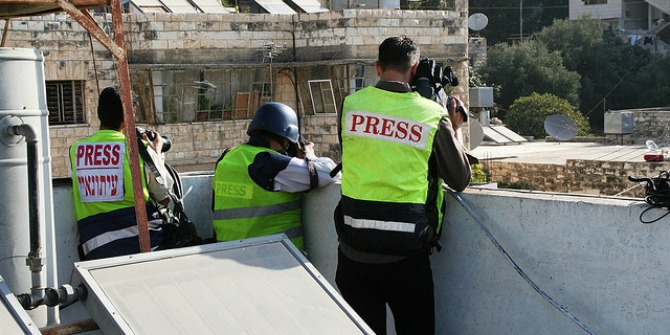 What is the relationship between sport and the state? Richard Holt finds that Simon Martin’s history of sport and society in Italy is an engaging, enlightening and scholarly addition to Italian history, and will be of particular value to those working in the history of sport.
What is the relationship between sport and the state? Richard Holt finds that Simon Martin’s history of sport and society in Italy is an engaging, enlightening and scholarly addition to Italian history, and will be of particular value to those working in the history of sport.
 Sport Italia: the Italian Love Affair With Sport. Simon Martin. I.B.Tauris July 2011.
Sport Italia: the Italian Love Affair With Sport. Simon Martin. I.B.Tauris July 2011.
One thing needs to be made clear at the outset. Any impression given by the title that this is a lightweight romp through Italian sport is quite wrong. A more accurate sub-title would have been ‘a social and political history of sport in Italy from the Risorgimento to Berlusconi’. This is a serious book by a serious historian, who has already proved his worth with a valuable account of football in fascist Italy. For those who do not know the subject well, John Foot’s Calcio: A History of Italian Football was the nearest thing to a general history, but now we have a full overview drawing on primary and secondary sources coving the entire span of modern Italian history.
Martin has the field to himself and he makes the most of it. He begins with the post-Risorgimento era of constitutional liberalism, with sport largely confined to a northern urban elite. He then looks at Mussolini’s extensive promotion of sport at the grass roots and as a tool of foreign policy, and he follows this with the striking continuities and divisions under the Christian Democrat hegemony. He then brings us almost up to date, finishing with Berlusconi’s fusion of political, media and sporting power. To write both modern and contemporary history is far from easy. The closer to the present the harder it is to disentangle and contextualise the mass of evidence. But Martin brings it off, primarily through the clarity of his political focus but also, one suspects, because he is so ‘at home’, having lived in Italy and taught Italian history in Rome for the last decade. Hence, the book has the advantage of external detachment – he is only too aware of the failings and limitations of his subject – and the enthusiasm and ‘feel’ of the insider.
So what has the author found? The key insight of the book, which is developed in vivid and telling detail, concerns the peculiar and problematic relationship of sport and the state. This began predictably enough with unification from above and the consequent lack of popular political legitimacy for the new state. Modern sport in the sense of a codified national structure was weak in a liberal Italy undermined by the implacable hostility of the Vatican and the disenfranchisement of the majority of the population, especially in the south. Hence sport was divided from its inception by religion, class and geography. The gymnastic movement – a feature of nineteenth century European sport linked to the obsession with paramilitary preparation – predictably had opposed Catholic and anti-clerical wings. English sports were introduced by the consular and commercial expatriates and were taken up by affluent anglophile youth in Turin, Milan and Genoa – hence AC Milan (not ‘Milano’). As in France, grass roots democratising of sport, except perhaps for cycling, was socially restricted.
The fascist coup of 1922 exploited this failure of liberal nation-building and quickly co-opted sport into its authoritarian populist project. Sport was to be brought to the people through the fascist youth movement, through the ‘dopolavoro’ or ‘after work’ leisure programmes for adults and at the elite competitive level through the incorporation of the nascent Italian Olympic movement (CONI). Victory in the newly created World Cup, hosted in Rome in 1934, was repeated in 1938 in Paris and cleverly exploited by the regime. This, combined with an impressive performance at the Berlin Olympics of 1936 and propaganda films of the Duce riding horses and racing cars, was an integral part of the regime’s wider self-fashioning as a potent, modernising power.
Some of this will already be familiar to readers of Martin’s earlier book but he offers a succinct and valuable synthesis for non-specialists. This is particularly helpful when moves to the Christian Democrat hegemony post-World War Two and its dramatic confrontation with Italian Communism. The story of the struggle between Italy’s two great cyclists, Gino Bartali, blessed by the Vatican, and the tall, hawk-nosed hero of the Left, Fausto Coppi, is well –told and set in the tense atmosphere of the early phase of the Cold War. Bartali winning the Tour de France at the age of 38 in 1948 was a phenomenal achievement which brought a brief moment of relief from political hostilities.
Integral to the ideological division, Martin shows that CONI, the Italian Olympic Committee which under fascism had become an umbrella organisation for most of Italian sport, was able to re-invent itself as a pseudo-democratic institution. CONI was not purged of its fascist past or senior personnel but was able to augment its power through the granting of the Olympic Games to Rome in 1960. Martin is particularly good on the complex tale of corruption by which both Christian Democrat politicians and the Vatican enriched themselves through property development subsidised by the Olympic urban regeneration programme. Even monuments to the Mussolini regime boasting of his invasion of Ethiopia and defiance of the League of Nations were preserved in the grandiose surroundings to the new Olympic stadium – now home to Lazio and Roma – and remain to this day
And so to Berlusconi, who is treated in depth and where Martin moves from being a professional historian to being an observer of the events he analyses. He has lived through this as well as studied it and with commendable post-modern frankness makes no claim to objectivity when it comes to Silvio’s self-aggrandizment through sport and his macho-posturing with footballers and other athletes. Echoes of the Duce are everywhere, most strikingly in Berlusconi’s exploitation of the success of the national football team in the 2006 World Cup. As Martin underlines, the ‘azzuri’ are a unifying force and an intermittent symbol of success in what is otherwise still a profoundly divided society.
Martin’s history is an engaging, enlightening and scholarly addition to Italian history and will be of particular value to those working in the history of sport more generally for whom Italian sport until now has been more or less a closed book.
——————————————————————————————-
Richard Holt is Professor of History at the International Centre for Sports History and Culture, De Montfort University, Leicester. He previously worked at the University of Leuven (Belgium) and Stirling University before joining the ICSHC in 1996. He has written general histories of both British and French sport and also professional golf. He is currently working on sporting heroes and national identity. He is the author of Sport and the British (OUP). Read more reviews by Richard.








1 Comments